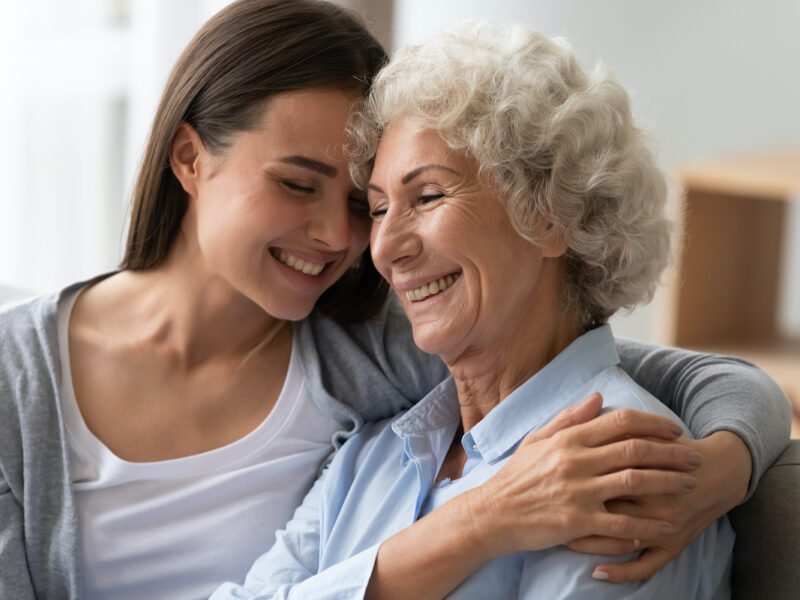Namaste Healthy: A Basic Guide to Yoga for Seniors
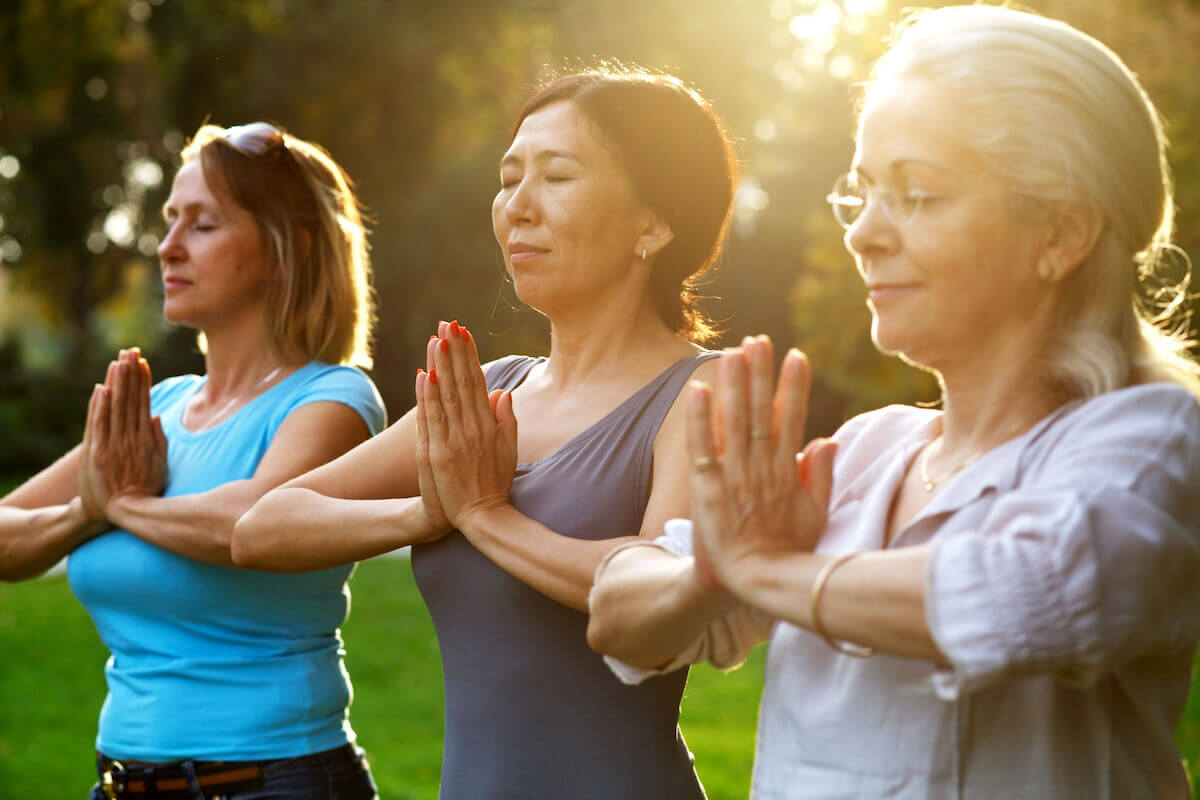
Namaste. Downward Dog. Warrior Two. You may have heard these phrases in passing and wondered, “What kind of exercise has poses that make you look like a dog”? You may know that these phrases have something to do with yoga, but that is as far as your knowledge goes.
We often mention how beneficial yoga is without really getting into the basics of the practice. For this reason, we’ve created this basic guide to yoga that explains what these phrases mean and more, letting you go from a yoga newbie to having some namaste knowledge.
HarborChase Senior Living has independent living communities throughout the United States. We focus on celebrating life and healthy aging through physical and mental activity—both of which are encouraged by yoga! So get started with your guide to yoga here!
What is Yoga?
We’ll start with the true basics. Simply put, yoga is a mind and body practice that consists of physical poses, concentration, and deep breathing. The practice of yoga can be traced back to Northern India over 5,000 years ago, where it was seen as a spiritual practice of emotional growth and control over the mind. It wasn’t until later that the physical aspect of yoga was added as an additional means of meditation.
Yoga means different things to different people. For some, it continues to be the spiritual practice that it originated as; for others, it is a comprehensive way of life. For others still, it is simply a way to move, strengthen, and feel connected to their bodies.
What Are the Benefits of Yoga?
Since yoga has so many varying meanings, it makes sense that it would have varying benefits. The practice offers promising benefits for the mind, body, and spirit—and you don’t have to be an expert to gain them! Yoga is advantageous to people of every age, body type, and fitness level. There has even been a lot of research lately into the specific benefits of yoga for older adults.
Physical Benefits of Yoga for Seniors Include:
- Strengthens bones and reduces the risk of osteoporosis
- Improves balance and prevents falls
- Strengthens muscles
- Reduces high blood pressure
- Improves core strength and eases back pain
- Improves respiration and breathing
- Can promote healthy eating habits
Mental/Emotional Benefit of Yoga for Seniors Include:
- Reduces anxiety
- Relieves insomnia and other sleep difficulties
- Strengthens social connections
- Promotes mindfulness
- Encourages an overall better quality of life
How Do I Get Started with Yoga?
It can be intimidating to start a yoga practice, especially if you’ve seen photos of people with their legs behind their heads or standing in a handstand. The good news is that anybody can practice yoga!
One of the easiest ways to get started is to find a class at your local gym, yoga studio, or senior center. Attending a class can be helpful for beginners because the instructor can help guide you through the practice and correct poses. It’s also a great way to meet people, get out of the house, and set aside time for yourself with no distractions.
You don’t have to go to a class to start yoga, though. There are several YouTube videos that guide you through practices, many of them catered to specific needs and goals. Lastly, you can simply practice on your own by learning some basic and effective poses.
Best Yoga Poses for Seniors
Here are five poses we suggest for getting started with yoga and gaining some physical health benefits.
1. Tree Pose
Tree Pose is great for balance, but it also can strengthen your core, legs, and ankles, as well as improve your posture. To do Tree Pose, stand tall and place all your weight on one foot. Then, lift the other foot so it is touching the inside part of your ankle (or thigh). Try to stay here for five deep breaths. If you need a modification, place your hand on a wall or chair for support.
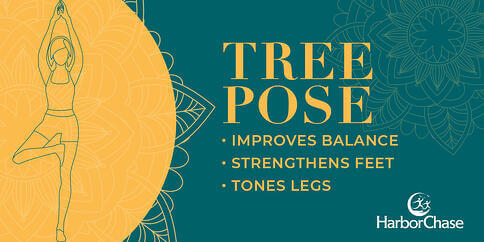
2. Cobbler’s Pose
Cobbler’s Pose is a hip-opening posture that stretches the inner thighs and knees, helps relieve fatigue, and is therapeutic for foot pain. It also can improve posture and core strength. For Cobbler’s Pose, sit down on a flat surface and bring the soles of your feet together as your knees open up to the sides.
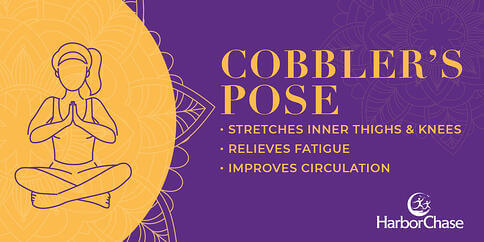
3. Sphinx Pose
Sphinx Pose is excellent for upper back strength and opening up the chest and is low-impact enough for most older adults to do. Lay flat on your stomach, place your forearms flat in front of you and slowly lift your chest. Draw your shoulder blades together while holding your abdominals in.
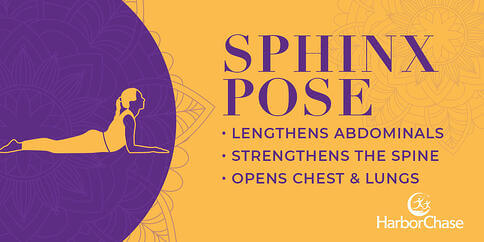
4. Downward Facing Dog
Downward Facing Dog (or Down Dog) is the quintessential yoga pose. It stretches and strengthens the entire body, increases circulation, and promotes joint and spine health. To form a Downward Dog, start on your hands and knees and then push your hips back to create a triangle shape with your body.
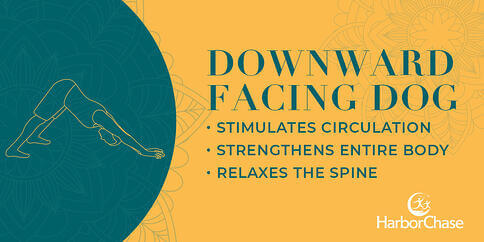
5. Corpse Pose
Don’t forget about the rest pose! Corpse Pose, or Savasana, is a resting posture that allows your body to restore itself from your practice. It can help calm the mind while reducing stress and anxiety. Corpse Pose is easy—just lie flat on your back! Completely relax the mind and the body as you take a restorative break.
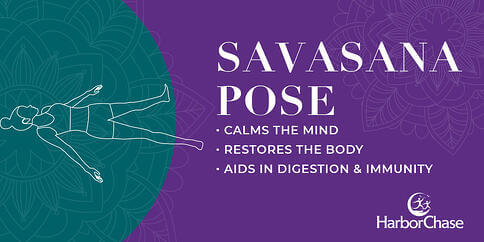
Roll Out Your Mat and Try Yoga Today!
Yoga may seem intimidating at first, but it’s truly one of the most beginner-friendly exercises, especially for older adults. It offers countless benefits to the mind, body, and spirit and allows you to go at your own pace with personalized goals and intentions.
HarborChase Senior Living offers daily yoga and other fitness classes in our independent living communities. We hope our beginner’s guide to yoga has given you a better understanding of this valued practice and has given you the confidence and motivation to try it for yourself!
Tags: Health Habits
November 22, 2024
HarborChase Senior Living shares tips to help you strike the perfect balance between ensuring your family member’s safety and encouraging their autonomy.
November 15, 2024
HarborChase Senior Living showcases how our upscale salon services enhance the daily lives of residents with top-tier care and true indulgence.
